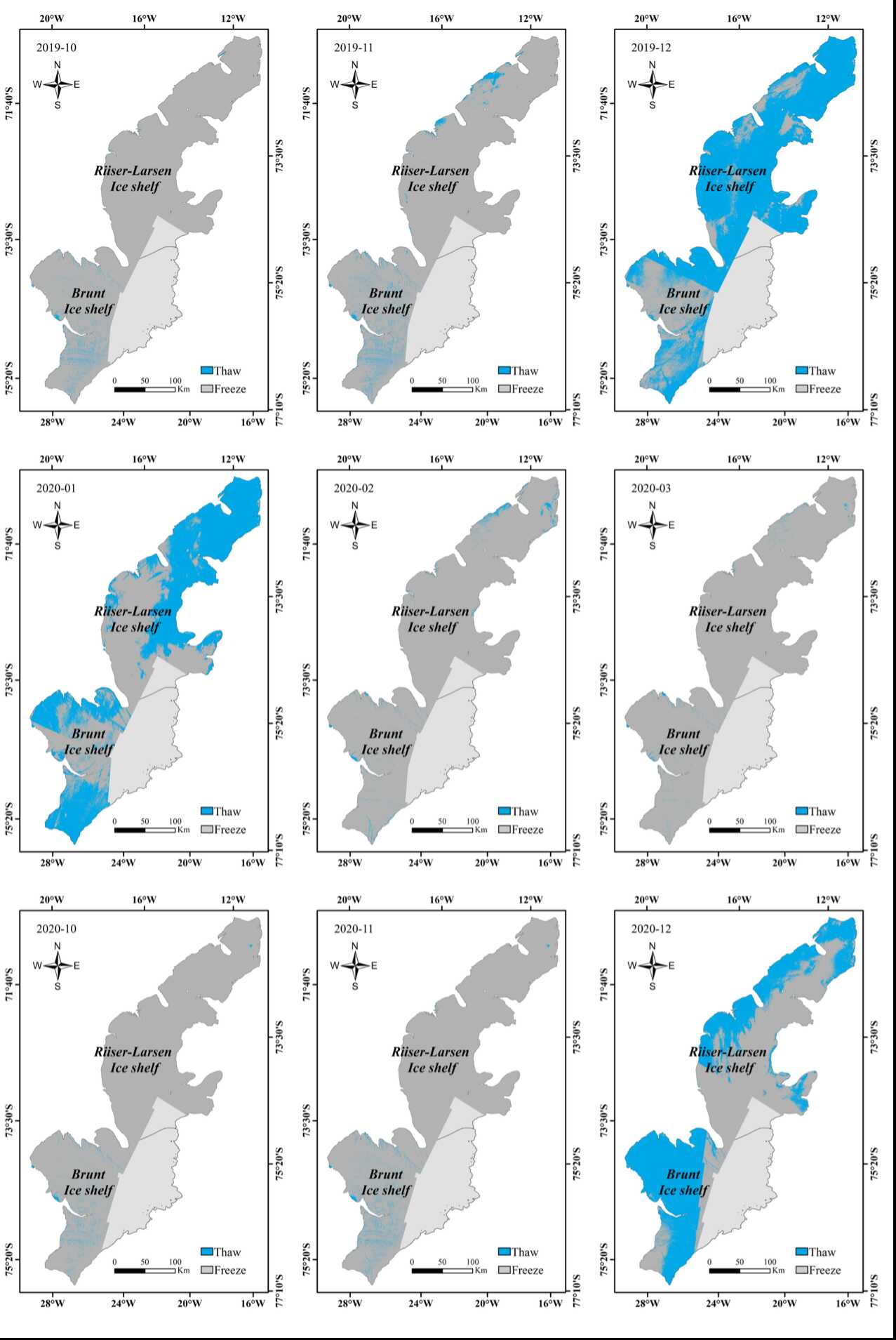Snow Algae Found to Accelerate Antarctic Ice Shelf Melting, Study Reveals
A new study has revealed that tiny organisms called snow algae are significantly contributing to the surface melting on Antarctic ice shelves. The discovery could have far-reaching implications for global sea level rise.
Published in Scientific Reports, the research is led by Dr. LIANG Dong from the Aerospace Information Research Institute, Chinese Academy of Sciences. By combining high-resolution satellite data from the Sentinel-1 and Sentinel-2 with advanced analytical techniques, the study explores how snow algae growth, temperature changes, and snowmelt interact on two major Antarctic ice shelves—Brunt and Riiser-Larsen ice shelves—between 2019 and 2022.
Snow algae are microscopic plants that grow on snow and ice, often giving it a green or reddish tint. These blooms darken the snow's surface, reducing its reflectivity and cause it to absorb more sunlight and heat. As a result, the ice melts faster.
"This creates a feedback loop," explained Dr. Liang. "More algae mean more melting, and more melting can create better conditions for algae to grow."
A key finding of the study is the timing of the algae blooms. They tend to appear early in the melt season, before temperatures reach their peak. Using time-lag-adjusted Pearson correlation and Granger causality analysis, the study establishes a robust linkage between the amount of snow algae, rising temperatures, and surface melting. Together, these factors form a feedback loop: algae growth leads to more melting—showing that these elements reinforce each other in a self-sustaining cycle.
Interestingly, the study also found that algae growth declines later in the season, despite continued and the temperature increases. This suggests a more complex relationship between algae and melting, which depends on a delicate balance of environmental conditions.
The study highlights how biological processes—like algae growth—contribute to polar climate dynamics in ways scientists are only beginning to understand. The findings suggest that future climate models should incorporate biological factors, to better predict sea-level rise.
This research also supports global efforts to fight climate change, particularly the United Nations’ Sustainable Development Goals13: Climate Action. By improving our understanding of what drives ice melt, scientists can help inform better climate policies and resilience strategies.

Algae distribution map of the study area (from 2019-10 to 2022-03). (Image by AIR)

Snowmelt distribution map of the study area (from 2019-10 to 2022-03). (Image by AIR)



News & Events